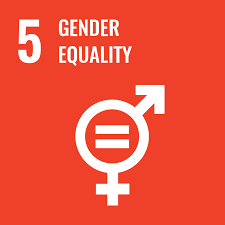Essity Hygiene and Health Report 2023–2024: Placing the Spotlight on Equality in Health and Well-Being
Investing in Women+’s and Girls’ Health and Well-Being
Originally published on Essity.com
Placing the spotlight on equality in health and well-being
The future of health and well-being for women and girls1 is at a crucial turning point. The convergence of multiple crises, including the Covid-19 pandemic, conflicts, and climate change, has deepened societal inequities and worsened women+’s possibilities to lead healthy lives. For example, closure of schools during the pandemic resulted in increased caregiving responsibilities for many parents, in particular women+. This, in combination with the economic instability compounded by the cost-of-living crisis, has left many women and girls without access to their right to health and essential services around the globe.2
Decades of research shows the direct and indirect benefits of investing in women+ and girls’ health and well-being.3 Prioritizing women+’s health does not only represent investing in the well-being of individual persons, but also benefits the health and prosperity of communities and promotes social and economic development. It contributes to making progress towards several SDGs and provides unparalleled returns on investment in improving society’s overall health.4
Placing the spotlight on equality in health and well-being drives progress towards achieving health and well-being for all.5 Applying a gender focus requires prioritizing investments in women+’s and girls’ health, increasing knowledge and awareness to break stigma, and engaging men and boys in all their diversity in women+’s and girls’ health. Consider the following:
- When governments and businesses position women+’s health issues as central to decision making, they can enact long-term sustainable change that facilitates health and well-being for all.
- Prioritizing women+’s and girls’ health, through alignment with the SDGs, will bring productivity increases across generations, leading to positive and sustainable economic development.6
- When menstrual health is defined as complete physical, mental, and social well-being in relation to the menstrual cycle, from menarche to menopause, multiple women+’s health outcomes are better understood and can be strengthened.
- Menstrual health as part of the curriculum in schools increases understanding by both girls and boys - in all their diversity, and also enables access to education for girls, which opens more options for jobs later in their lives. Each additional year of schooling can boost a girl’s earnings as an adult by up to 20%.7
Menstrual health is defined as complete physical, mental, and social well-being in relation to the menstrual cycle.8
Promoting equitable ideas about gender drives progress on women+’s health
Ideas about gender are closely linked to women+’s and girls’ health. Engaging men and boys as allies and addressing stereotypical attitudes and behaviors about gender are crucial drivers for meaningful progress towards gender equality.
Women+ Not everyone who menstruates is a woman and not all women menstruate. Inclusive language is imperative in helping create a world free from stigma. That is why the term ‘women+’ will be used in this report. The term does not detract from those who identify with the term ‘women’, but the addition of the ‘+’ sign is intended to capture the full range of people who menstruate. In certain cases, the term ’women’ will be used, such as when referring to research that only includes cis women9 or does not differentiate based on gender identity.
According to the International Men and Gender Equality Survey (IMAGES), carried out by United Nations Population Fund (UNFPA) and Equimundo in 2022, young men are more likely to hold inequitable views about gender than older men. This is persistent with the recent era of backlash against the progress of gender rights.10
At the same time, views and attitudes on gender vary significantly among younger men, providing an opportunity for change where needed and to shift gender norms by building on progress already made. Research shows that gender-normative societal expectations are often imposed on children from an early age, and because of these expectations, boys are not always given the space to fully develop their relational and emotional skills. These norms can sometimes negatively impact boys’ and young men’s views on gender equality.11 Different stakeholders, such as policymakers, communities, and businesses can play a role in building inclusive environments that foster healthy views on gender and that involve men and boys from diverse backgrounds around women+’s health and menstrual health to drive progress.
SDG 5. Achieve gender equality and empower all women and girls. Engaging men and boys, in all their diversity, on menstrual health issues to increase their knowledge and understanding, creates environments that foster healthy views about gender norms, increases gender equality, and reduces the stigma surrounding menstrual health.12 This drives progress to achieve SDG 5.
Engaging influential individuals who shape the environments where boys and young men grow and develop is crucial to promoting positive change. Creating spaces for discussions around gender norms and menstrual health with parents, teachers, coaches, religious leaders, healthcare workers, and others who impact men and boys’ daily lives enables progress.13 By working together, these individuals can address underlying societal norms and create safe and supportive environments that promote constructive dialogues and gender norms that can help break barriers to women+’s overall health and menstrual health in particular. There is an opportunity to build resilience and courage for men to use their voice positively and stand up for women+ in situations that may feel awkward and to break traditional norms. Ultimately this enables better health outcomes for all.14
Download the Essity 2023-2024 Hygiene and Health Report to learn more
1The term “women and girls” in this report is used as a shorthand term in this report to increase readability but refers to all people who menstruate and go through menopause including girls, women, transgender and non-binary persons.
2UN Women (2022) PROGRESS ON THE SUSTAINABLE DEVELOPMENT GOALS. https://www.unwomen.org/sites/default/files/2022-09/ Progress-on-the-sustainable-development-goals-the-gender-snapshot-2022-en_0.pdf
3UN Women (2022) PROGRESS ON THE SUSTAINABLE DEVELOPMENT GOALS. https://www.unwomen.org/sites/default/files/2022-09/ Progress-on-the-sustainable-development-goals-the-gender-snapshot-2022-en_0.pdf
4Remme M, Vassall A, Fernando G, Bloom DE. (2020) Investing in the health of girls and women: a best buy for sustainable development. doi: 10.1136/bmj.m1175.
5Remme M, Vassall A, Fernando G, Bloom DE. (2020) Investing in the health of girls and women: a best buy for sustainable development. BMJ. doi: 10.1136/bmj.m1175. PMID: 32487585; PMCID: PMC7265042.
6Onarheim KH, Iversen JH, Bloom DE. (2016) Economic Benefits of Investing in Women’s Health: A Systematic Review. doi: 10.1371/journal. pone.0150120.
7UN Women (2022) PROGRESS ON THE SUSTAINABLE DEVELOPMENT GOALS. https://www.unwomen.org/sites/default/files/2022-09/ Progress-on-the-sustainable-development-goals-the-gender-snapshot-2022-en_0.pdf
8Hennegan, J., Winkler, I. T., Bobel, C., Keiser, D., Hampton, J., Larsson, G., ... & Mahon, T. (2021). Menstrual health: a definition for policy, practice, and research. Sexual and Reproductive Health Matters, 29(1), 31-38.
9The term cis, short for cisgender, is used to describe people whose gender identity matches the sex they were assigned at birth.
10Equimundo. (2022). The International Men and Gender Equality Survey: A status report on men, women, and gender equality in 15 headlines. https://www.equimundo.org/resources/men-and-gender-equality-a-global-status-report-in-15-headlines/
11Equimundo. (2022). The International Men and Gender Equality Survey: A status report on men, women, and gender equality in 15 headlines. https://www.equimundo.org/resources/men-and-gender-equality-a-global-status-report-in-15-headlines/
12Sommer M, Torondel B, Hennegan J, Phillips-Howard PA, Mahon T, Motivans A, Zulaika G, Gruer C, Haver J, Caruso BA (2021) Monitoring Menstrual Health and Hygiene Group. How addressing menstrual health and hygiene may enable progress across the Sustainable Development Goals. Glob Health Action. 1;14(1):1920315. doi: 10.1080/16549716.2021.1920315.
13Sommer M, Torondel B, Hennegan J, Phillips-Howard PA, Mahon T, Motivans A, Zulaika G, Gruer C, Haver J, Caruso BA (2021) Monitoring Menstrual Health and Hygiene Group. How addressing menstrual health and hygiene may enable progress across the Sustainable Development Goals. Glob Health Action. 1;14(1):1920315. doi: 10.1080/16549716.2021.1920315.
14Sommer M, Torondel B, Hennegan J, Phillips-Howard PA, Mahon T, Motivans A, Zulaika G, Gruer C, Haver J, Caruso BA (2021) Monitoring Menstrual Health and Hygiene Group. How addressing menstrual health and hygiene may enable progress across the Sustainable Development Goals. Glob Health Action. 1;14(1):1920315. doi: 10.1080/16549716.2021.1920315.



